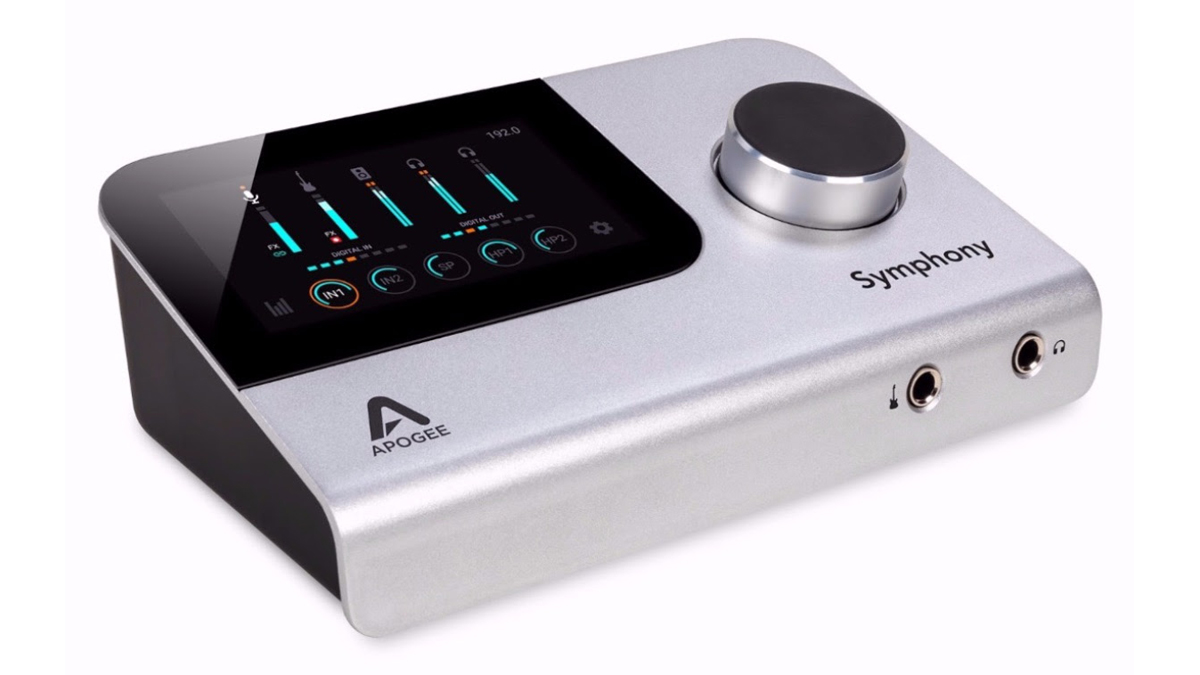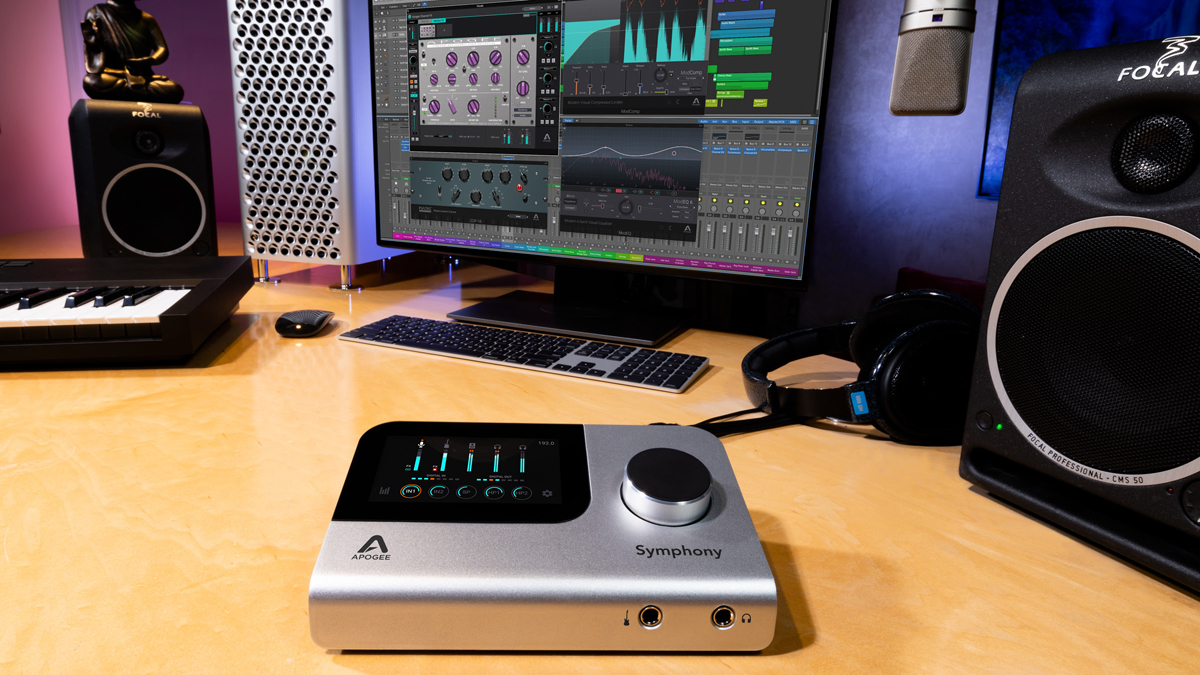NAMM 2020: Apogee announces Symphony Desktop, a high-quality desktop audio interface with DSP-powered plugins
A serious rival to Universal Audio’s Apollo range?

NAMM 2020: In what looks like an attempt to take on Universal Audio and its Apollo range, Apogee has announced Symphony Desktop, a DSP-toting 10-in/14-out audio interface that promises to blend the sound quality of the existing Symphony I/O MkII with the simplicity of its more affordable Duet and Quartet interfaces.
This is the most affordable Symphony product ever, but still packs in flagship A/D converters and mic preamps, a dynamic touchscreen and a single control knob.
One of the big potential highlights is the hybrid Alloy Mic Preamp emulation, which uses both analogue circuitry and DSP processing to create what Apogee is calling “the richest, most authentic audio modeling available in an audio interface”. Emulations of both British Solid State and American Tube analogue preamps come included.

You also get both native and hardware DSP versions of the Symphony ECS Channel Strip, which has been tuned by legendary mix engineer Bob Clearmountain. This includes EQ, Compression and Saturation controls for getting the perfect sound when you’re tracking vocals or acoustic instruments.
You can use Symphony Desktop in both Print and Dual Path link modes, both of which promise zero-latency monitoring when tracking through the Apogee FX. The advantage of using Dual Path link mode, though, is that you also have the option of adjusting FX later, rather than having them printed at the time of recording.
Symphony Desktop costs $1,299, though you could also choose the Symphony Desktop FX Complete bundle. This costs $1,299 and adds the Pultec EQP-1A, Pultec MEQ-5, ModEQ 6, ModComp and Opto-3A plugins (valued at $499 on their own).
Find out more on the Apogee website.
Get the MusicRadar Newsletter
Want all the hottest music and gear news, reviews, deals, features and more, direct to your inbox? Sign up here.
Apogee Symphony Desktop specs
- Flagship Symphony Sound Quality
- 10 IN x 14 OUT simultaneous channels of audio
- Cutting edge components and circuit design deliver detailed and pristine sound quality
- A/D & D/A Resolution up to 24bit/192kHz
- 2 Advanced Stepped Gain mic preamps, up to 75dB of gain, variable impedance
- Apogee Alloy Mic Preamp emulation (Analog processing + DSP modeling)
- Built-in hardware DSP processing of Apogee FX Rack plugins
- Includes British Solid State mic preamp emulation
- Includes 50s American Tube mic preamp emulation
- Includes Symphony ECS Channel Strip - Native and hardware DSP versions with EQ, Compression and Saturation
- Includes Symphony Reverb - Native version
- Flexible, zero latency plugin workflows: Print, Monitor and DualPath Link
- 1 Instrument input with variable impedance and colored FET input stage for electric guitar
- Analog Inputs: 2 x XLR-1/4" combi (mic/line), 1 x 1/4" (Hi-Z)
- Analog Outputs: 2 x 1/4" (monitor)
- 2 assignable headphone outputs: 1 x 1/4", 1 x 1/8”
- Digital I/O: 2 x Optical Toslink (ADAT,S/PDIF)
- Computer Connectivity: USB over type C Connector
- Dynamic touch screen display for comprehensive hardware control
- Software control: Symphony Desktop Control application
- MIDI over USB
- Compatible with iPad Pro, iOS 13



I’m the Deputy Editor of MusicRadar, having worked on the site since its launch in 2007. I previously spent eight years working on our sister magazine, Computer Music. I’ve been playing the piano, gigging in bands and failing to finish tracks at home for more than 30 years, 24 of which I’ve also spent writing about music and the ever-changing technology used to make it.









